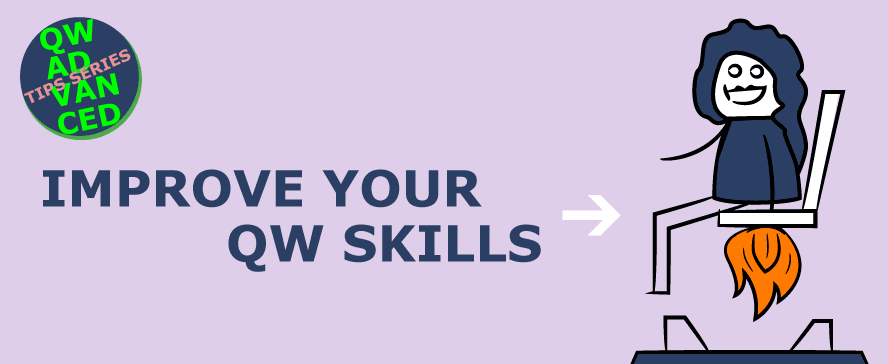
Get 3 new tips for experienced QualiWare users
By Jens Anker Hansen, QualiWare Consultant
Here is a a list for easy download with the most popular shortcuts in QualiWareLifecycleManager (QLM).
Learn how you can save hours of work when you import an excel file to QLM.
Most businesses have many stakeholders, both internal and external. Applying QualiWare's BusinessEcoSystem technique can be very helpful in describing and defining collaborations, integrations, etc., at a general level.
# Tip 1: Get a list of shortcuts in QLM
For some time, several QualiWare users have requested a list of the shortcuts in QualiWareLifecycleManager (QLM). The list is already available on our Center of Excellence use the link below
We have made a short version for easy download with the most popular shortcuts.
We recommend you save or print it, so it’s always easily accessible when working in QLM.

# Tip 2: Simple import of data to QLM
Get the data from Excel and other formats into QLM – fast and easy!
First-time users of QualiWareLifecycleManager (QLM), and even experienced users, who are looking to use QLM for new areas of their business often have information stored in other formats such as Excel.
A quick way to get the data into QLM from Excel is to save the Excel file as a CSV file and create a GenericTableInterface object. The GenericTableInterface object reads the first line in the CSV file as column headers, each column can be mapped/translated into objects, properties and relationship between objects in QLM.
Loading a simple excel file will take about 5 to 10 minutes, and it will save you hours of work.
Below shows a CSV file with four columns describing various IT systems:
Figure 1: At the very top, we select the input file.

Figure 2: After that, the input choices in the middle of the screen are automatically filled out.

Figure 3:
At the bottom, we set up how each area should be managed when loaded. Loading a simple excel file will take about 5 to 10 minutes, and it will save you hours of work.

Do you want to learn more about how to import and export data to and from QLM?
Get our step-by-step-guide to GenericTableInterface at the link below:
#Tip 3: Get an overview of your business' stakeholders (BusinessEcoSystem)
Do you want to learn more about how to import and export data to and from QLM?
Integrating processes and exchanging information between companies plays an increasingly important role in quickly adapting to changing opportunities and conditions.
Therefore, it's crucial that you understand and are able to describe how your business or organization fits into its surroundings. In QualiWare this can be modeled as a BusinessEcoSystem.
Who are your stakeholders?
Most businesses have many stakeholders, both internal and external. Some of these will be well known, whilst others are unknown and some may even be hostile.
Applying QualiWare's BusinessEcoSystem technique can be very helpful in describing and defining collaborations, integrations, etc., at a general level.
New insights of the current situation
Qualiware’s BusinessEcoSystem can bring new insights into the current situation of the business.
The model below can be used to show references to projects and initiatives aiming at changing the business’ ability to interact and integrate with other businesses and organizations, and hence ensure that the projects have the right focus.
The model below can be used to show references to projects and initiatives aiming at changing the business’ ability to interact and integrate with other businesses and organizations, and hence ensure that the projects have the right focus.
Colors and symbols for an easy overview
In Qualiware’s BusinessEcoSystem colors and symbols are used to distinguish between internal (blue) and external stakeholders and whether the external stakeholders are known (green), unknown (yellow), or even hostile (red). See the figures below:
Figure 1: The model in Qualiware’s BusinessEcoSystem showing all internal and external stakeholders

Figure 2: The model focusing on Internal stakeholders (blue)

Figure 3: The model focusing on external stakeholders, which are known (green).

Figure 4: The model focusing on the external stakeholders, which are unknown (yellow).

Figure 5: The model focusing on the external stakeholders, which are hostile (red).







